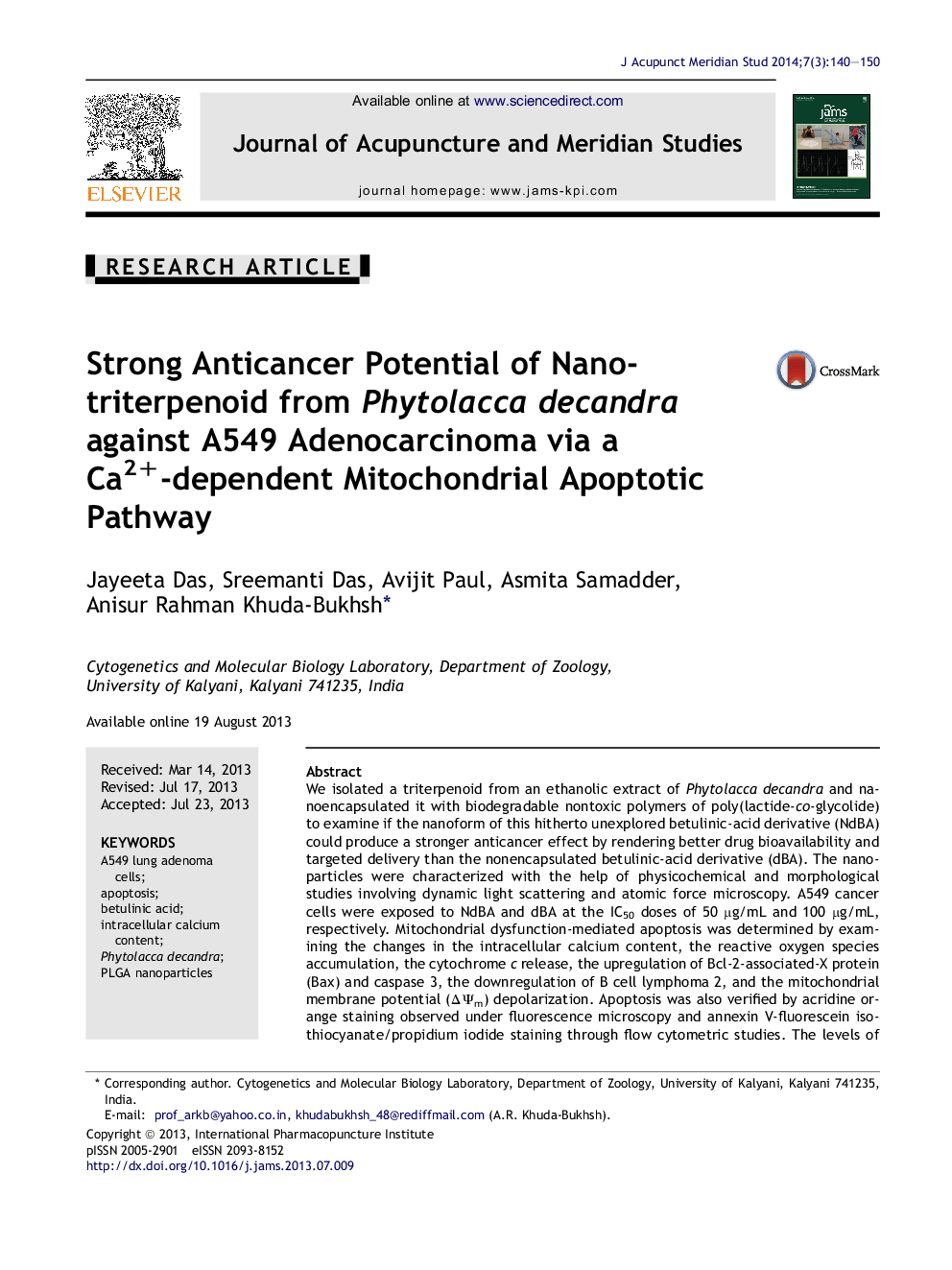| Article ID | Journal | Published Year | Pages | File Type |
|---|---|---|---|---|
| 3098591 | Journal of Acupuncture and Meridian Studies | 2014 | 11 Pages |
We isolated a triterpenoid from an ethanolic extract of Phytolacca decandra and nanoencapsulated it with biodegradable nontoxic polymers of poly(lactide-co-glycolide) to examine if the nanoform of this hitherto unexplored betulinic-acid derivative (NdBA) could produce a stronger anticancer effect by rendering better drug bioavailability and targeted delivery than the nonencapsulated betulinic-acid derivative (dBA). The nanoparticles were characterized with the help of physicochemical and morphological studies involving dynamic light scattering and atomic force microscopy. A549 cancer cells were exposed to NdBA and dBA at the IC50 doses of 50 μg/mL and 100 μg/mL, respectively. Mitochondrial dysfunction-mediated apoptosis was determined by examining the changes in the intracellular calcium content, the reactive oxygen species accumulation, the cytochrome c release, the upregulation of Bcl-2-associated-X protein (Bax) and caspase 3, the downregulation of B cell lymphoma 2, and the mitochondrial membrane potential (ΔΨm) depolarization. Apoptosis was also verified by acridine orange staining observed under fluorescence microscopy and annexin V-fluorescein isothiocyanate/propidium iodide staining through flow cytometric studies. The levels of intracellular adenosine triphosphate/adenosine diphosphate ratio decreased, and the ATPase activity increased more strikingly in A549 cells exposed to NdBA than in A549 cells exposed to dBA. Overall results showed that both drugs directly target the mitochondrial oxidative phosphorylation system, with NdBA having a stronger effect, indicating NdBA to be a better candidate for the development of an anticancer drug for use against lung adenocarcinomas.
